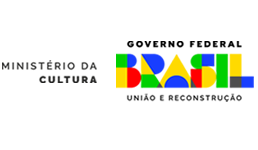A work of love and technique. Text by João Candido Portinari, Director of the Portinari Project, published in the Catalogue Raisonné, in 2004.
The Portinari Project is proud to present one of its most significant accomplishments in 25 years of operation. Last year we published the illustrated chronobiography of the painter; now we offer the artist’s catalogue raisonné, the culmination of the tireless efforts of a team of researchers headquartered at the Pontifical Catholic University of Rio de Janeiro (PUC–Rio). Two years before we began our work, Portinari’s biographer, Antonio Callado, wrote: “ (…) Isolated in private collections and bank halls, Candinho [Portinari] is becoming invisible (…) Will our greatest painter remain dissevered like the Tiradentes he painted?”
Soon after visiting the headquarters where the Portinari Project was taking its first steps, Callado wrote (IstoÉ, 04/14/1982): “(…) In the house of French architect Grandjean de Montigny, a labor of love and technique ensures for posterity the oeuvre of Portinari (…)”
When we began on April 2, 1979, seventeen years after the artist’s death, his works had never been cataloged, the whereabouts of most of his works was unknown, books on his life and work were out of print, and never had a retrospective exhibition presented the full range of his artistic legacy. Primary sources of information on his work and life were dispersed and virtually inaccessible. That’s when, during a visit to the Museum of Modern Art of New York – MoMA, I saw for myself the sad truth: that museum had more information on Portinari than any of the Brazilian institutions I had visited. One could not deny that the memory of one of the twentieth century’s greatest painters was waning. The living history of his contemporaries would soon be lost, like that of his childhood companions. The Portinari Project was fortune enough, in 1982, to gather the live testimony of the latter while this was still possible. It was they who illuminated the mystery of how, from an isolated settlement amidst the coffee plantations of São Paulo, the son of poor immigrants could rise to become the most famous Brazilian painter of all time.
In a subsequent chapter, Christina Penna, technical director of the Portinari Project, chronicles our journey. Along with my gratitude to her, I extend my thanks to every invaluable colleague in this endeavor, who helped transform it into an act of patient and tenacious love. In fact, there are so many institutions and individuals to thank , all equally important, that I thought it most appropriate to acknowledge my appreciation for them by expressing gratitude to two people who were absolutely essential to making our work viable and successful: José Pelúcio Ferreira, at that time president of the Financiadora de Estudos e Projetos – FINEP (Studies and Projects Funding Body), and Roberto Marinho, president of Organizações Globo (Globo Organizations).
Upon reflection, it seems that a miracle has taken place: Brazil as a whole has shown heartwarming, steadfast solidarity with the Portinari Project; countless major institutions have supported its efforts; an enthusiastic array of friends, professionals, contemporaries of the painter, authorities and unknown contributors all mobilized to help. With their collaboration, we were able to locate, document, research and catalog Portinari’s body of work, found throughout Brazil and over twenty countries in the Americas, Europe and the Middle East, in addition to documents related to his work, life and era.
If one considers only such publications as meet the rigorous criteria that define a catalogue raisonné – not restricted to a single period or technique – this is the first dedicated to a Latin American artist. Producing such a publication is, to be sure, something of an endurance test, often requiring decades of persistent, meticulous dedication. It is not unusual for an entire team of professionals to disband and the project be assumed years later by another team. The most suitable environment for a project of this magnitude would be any country stable enough to allow its institutions to progress consistently, even during times of political and economic transition. Hence the idea that the catalogue raisonné is “a First World phenomenon.” Even in the most developed countries, they are a rare flower indeed. One need only consult the renowned Benezit to confirm this: In its current 14 volumes, the encyclopedia recognizes 170 thousand prominent artists from all nations and periods of history. Among them, less than one thousand have had their works organized into a catalogue raisonné. That means, for every 170 internationally established artists, only one has the honor of a catalogue raisonné. It represents, then, a historical landmark for a nation: When a country publishes a catalogue raisonné dedicated to one of its artists, it is taking a step forward in its own civilization.
It seems to me our catalogue raisonné requires no further introduction. Its very existence says far more than I could express in a few short words. Portinari’s work required no verbal explanation, and in this spirit, we step aside to let his catalogue raisonné speak for itself (and for us …).
My hope is that our catalogue will be an important instrument for reflecting the true grandness of Brazil to fellow nations and to our fellow Brazilians.
“(…)The young Candido Portinari left my land with paper and colors in hand for the great adventure of painting a country. Paint it? No. Create it from an unnoticed reality, show it in the four corners of the earth – contorted, yearning, oppressed, fledgling – as if to say: ‘This is what we are’(…) “
(…) One day, we will be mere shreds of our own story. Future hands, eager and wise, will reconstruct what we have been and we will amaze them. From the dust we then are, they will extract that which those eyes drank in and which sprang from those fingers. They will know we were here because he created our eternity (…) (Guilherme Figueiredo)
I am grateful to Petrobras for making it possible for “that which those eyes drank in and which sprang from those fingers” to be now on record and available to young artists, students, scholars and researchers in all four corners of the world.
“(…) Candido Portinari ennobled us with his painting. He was one of the most important men of our time, for from his hands flowed color and poetry, the drama and hope of our people. With his brushes he touched the depths of our reality. Brazilian soil, Brazilian people – peasants, migrants, children, saints and circus performers, the animals and the landscape – were the materials he used to build his perennial work (…)” (Jorge Amado)
If one considers only such publications as meet the rigorous criteria that define a catalogue raisonné – not restricted to a single period or technique – this is the first dedicated to a Latin American artist. Producing such a publication is, to be sure, something of an endurance test, often requiring decades of persistent, meticulous dedication. It is not unusual for an entire team of professionals to disband and the project be assumed years later by another team. The most suitable environment for a project of this magnitude would be any country stable enough to allow its institutions to progress consistently, even during times of political and economic transition. Hence the idea that the catalogue raisonné is “a First World phenomenon.” Even in the most developed countries, they are a rare flower indeed. One need only consult the renowned Benezit to confirm this: In its current 14 volumes, the encyclopedia recognizes 170 thousand prominent artists from all nations and periods of history. Among them, less than one thousand have had their works organized into a catalogue raisonné. That means, for every 170 internationally established artists, only one has the honor of a catalogue raisonné. It represents, then, a historical landmark for a nation: When a country publishes a catalogue raisonné dedicated to one of its artists, it is taking a step forward in its own civilization.
It seems to me our catalogue raisonné requires no further introduction. Its very existence says far more than I could express in a few short words. Portinari’s work required no verbal explanation, and in this spirit, we step aside to let his catalogue raisonné speak for itself (and for us …).
My hope is that our catalogue will be an important instrument for reflecting the true grandness of Brazil to fellow nations and to our fellow Brazilians.
“(…)The young Candido Portinari left my land with paper and colors in hand for the great adventure of painting a country. Paint it? No. Create it from an unnoticed reality, show it in the four corners of the earth – contorted, yearning, oppressed, fledgling – as if to say: ‘This is what we are’(…) “
(…) One day, we will be mere shreds of our own story. Future hands, eager and wise, will reconstruct what we have been and we will amaze them. From the dust we then are, they will extract that which those eyes drank in and which sprang from those fingers. They will know we were here because he created our eternity (…) (Guilherme Figueiredo)
I am grateful to Petrobras for making it possible for “that which those eyes drank in and which sprang from those fingers” to be now on record and available to young artists, students, scholars and researchers in all four corners of the world.
“(…) Candido Portinari ennobled us with his painting. He was one of the most important men of our time, for from his hands flowed color and poetry, the drama and hope of our people. With his brushes he touched the depths of our reality. Brazilian soil, Brazilian people – peasants, migrants, children, saints and circus performers, the animals and the landscape – were the materials he used to build his perennial work (…)” (Jorge Amado)






